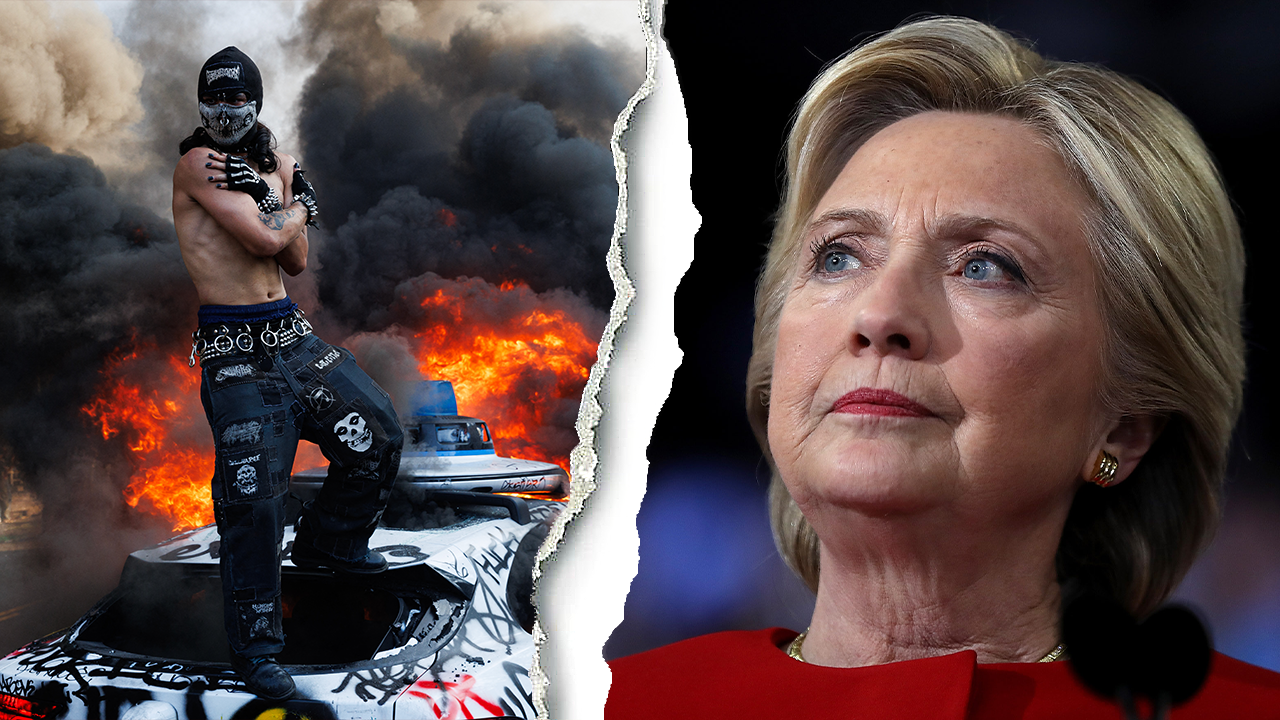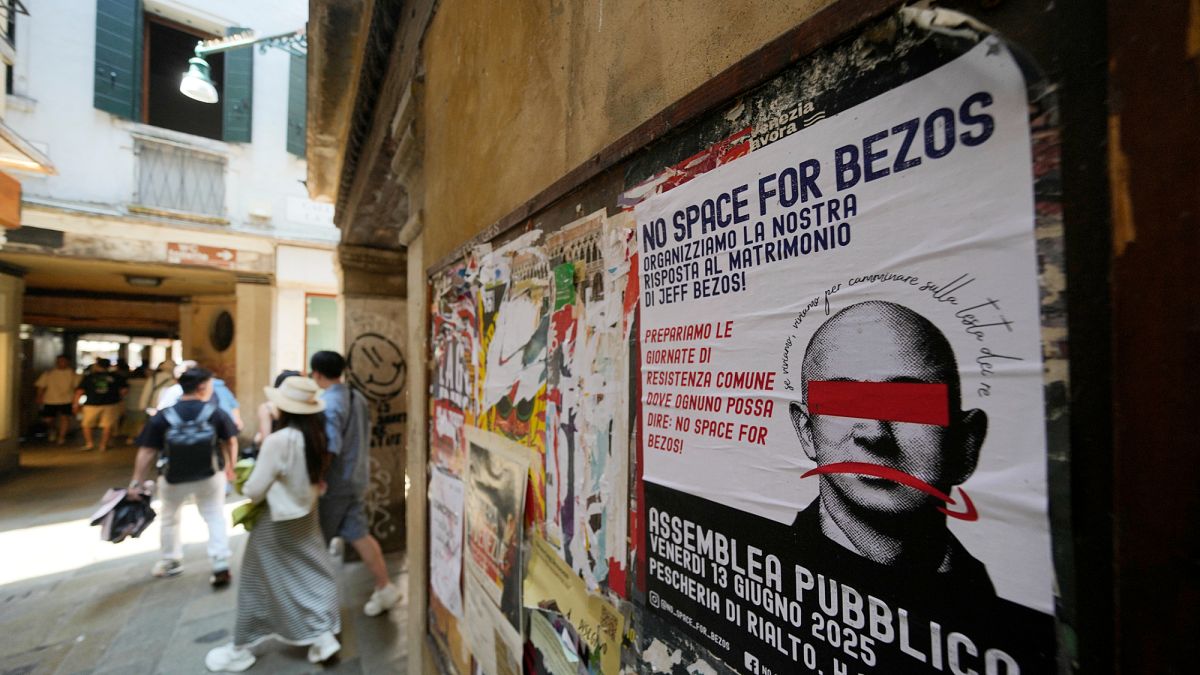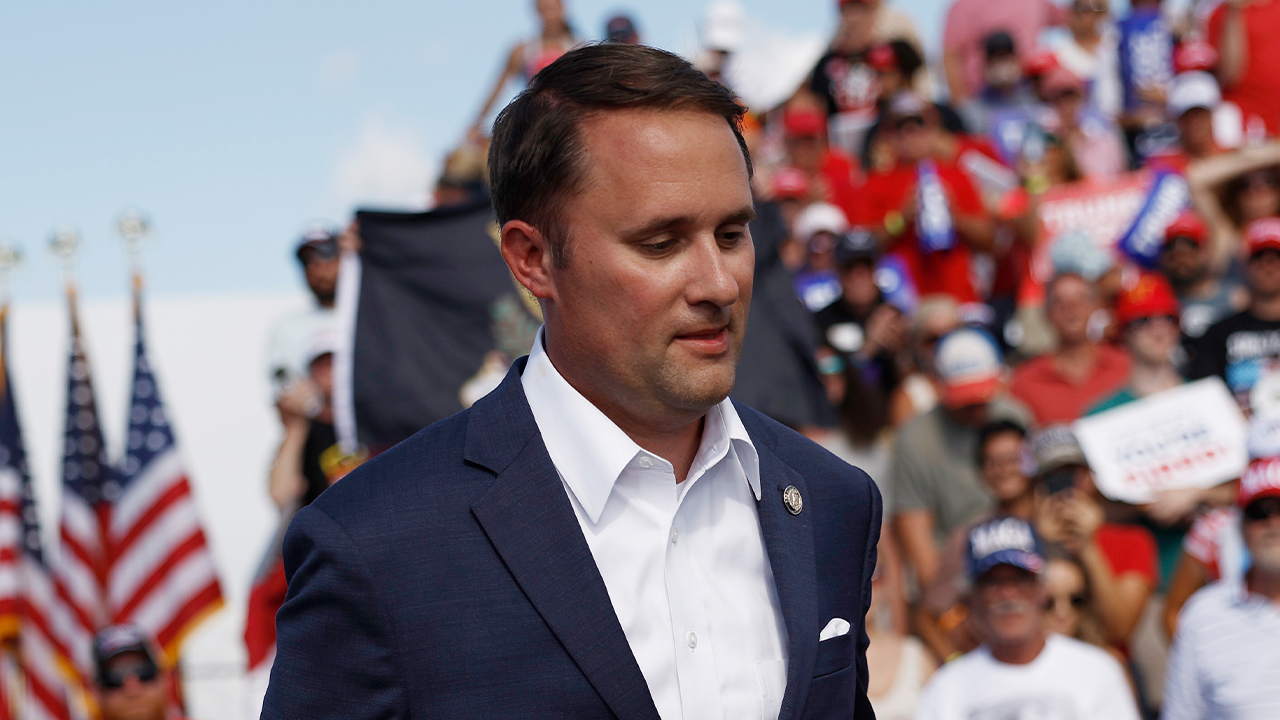New York
After Days of Chaos at Rikers, Judge to Hear Arguments for Takeover

A federal judge Thursday opened the door to stripping New York City of control over Rikers Island, in a hearing that highlighted the daily chaos that reigns in the jails despite repeated assertions by Mayor Eric Adams and his allies that conditions are improving.
Just two days ago, according to data presented at the hearing, staffers used force against detainees 29 times. There were 12 fights among detainees and 10 incidents in which detainees harmed themselves or said they wished to. There were nine assaults on staff and seven fires. Jail workers recovered cocaine, fentanyl, marijuana, Prozac, Ambien, 15 sharp objects and two iPhones.
To alleviate a crisis in which a normal day can include numbers like those, the judge, Laura Taylor Swain, will now allow federal prosecutors and lawyers for detainees to argue that an outside authority should take over the jails. On Thursday, she set a schedule for a series of legal arguments that may shape the future of the city’s jail system.
Judge Swain, of Federal District Court in Manhattan, said that while she had not given up on the city, it had not shown that it was willing or able to keep people in custody safe.
“The people incarcerated at Rikers are at a grave risk of immediate harm,” she said.
Though Judge Swain’s decision on Thursday is a major step, there is still no guarantee that she will appoint an outside authority, known as a receiver. That decision is months away, and would follow prolonged legal arguments between prosecutors and detainees’ lawyers, who are working together, and the city. The first legal filing on the road to receivership is due in November, and the process is not expected to be completed until next year.
If appointed, the receiver would have powers that correction commissioners do not. Backed by Judge Swain, he or she could override state and local laws, cutting through red tape and employment rules — which could mean severing or limiting the relationship between the jails and the correction officers’ union, which has major sway over how they are run.
Experts have warned that a receiver — who would be chosen by the judge — would still have a difficult time given the depth and complexity of the problems that bedevil Rikers Island.
The jail complex tumbles from crisis to crisis. The most recent began in 2020. With New York still in the throes of the pandemic, hundreds of correction officers began calling in sick or simply failing to show up. Their absence created conditions for more uses of force by guards who remained on duty, more serious violence among detainees and a spike in self-harm. Over 40 people held in the jails have died since the beginning of 2021. Last year’s toll of 19 was the most in nearly a decade.
Mayor Adams and his correction commissioner, Louis A. Molina, insist that the situation is turning around, even as four people died last month.
On Tuesday, one of three recent days of chaos sketched at the hearing, lawmakers toured the jails. Aligned with Mr. Adams against receivership — as well as with the city’s largest correction officers union — many remarked publicly on supposedly improved conditions and posted cheerful pictures of the facilities.
Anna Friedberg, the member of the judge’s monitoring team who rattled off the damning data during the hearing, said the visit was one of several ways in which the administration has sought to shape public perception. She mentioned that the following day, during a tour of the facilities, her team had encountered detainees openly using narcotics.
Immediately after her presentation, Mr. Molina took the lectern and said that the Adams administration has made progress “at a breakneck pace.”
“Things are not getting worse,” he said. “The facts suggest the very opposite.”
His view was disputed. Jeffrey Powell, a federal prosecutor, said that the crisis persists, and that his office “just can’t wait any longer for conditions to substantially improve.” Mary Lynne Werlwas, a Legal Aid Society lawyer for detainees, said that the city in recent months has showed a “disturbingly cavalier attitude toward truthfulness.”
Interviews with those familiar with the system demonstrate that the situation remains dire.
Margaret DaRocha, a trial attorney at New York County Defender Services, said that she had made a special effort to protect one client, whom she declined to name for fear of retaliation from correction officers. Her client is incontinent because he had been shot in the stomach years ago. Ms. DaRocha worried that at Rikers, he would be vulnerable to medical complications, as well as attacks from guards and other detainees.
After communicating her concerns, she learned that the Department of Correction had not moved her client to protective housing. Toward the end of June, he was punched in the jaw by another detainee. He had emergency surgery and is now back at Rikers, where he is being told he does not qualify to have his jaw wound cared for.
Thursday’s hearing had been a long time coming. In April 2022, the U.S. attorney in Manhattan, Damian Williams, suggested that the emergency at Rikers might be solved only if an outsider were to step in. But Judge Swain gave the city more time to right the crisis after hearing Mr. Molina argue that “change must come from within.”
Mr. Molina worked with the monitoring team that oversees the jails, led by Steve J. Martin, to make a plan for change.
By November, 18 people had died either in custody or directly upon release, and lawyers for detainees — the Legal Aid Society and the firm Emery Celli Brinckerhoff Abady Ward & Maazel — asked to be permitted to argue for a takeover. Judge Swain denied the request.
This year, there was a shift. Mr. Martin, who had previously praised Mr. Molina, began to criticize him for opacity, even asserting that the city could not be trusted to accurately disclose the number of people who had died on its watch. Mr. Martin’s dissatisfaction appears to have influenced Judge Swain. In a recent hearing and again in recent filings, she has blasted the city for failing to “address the dangerous conditions that perpetually plague the jails.”
Still, Judge Swain said Thursday that a drastic solution might not be necessary. She warned that she still expects the administration to turn things around.
“I will be watching,” she said. “The people of this city will be watching.” She later added, “Watching in justifiable expectation — as well as in hope.”

New York
10 Questions With Brad Lander

Brad Lander took a risk last summer when he entered the New York City mayor’s race instead of running for a second term as comptroller.
But he was worried then, he says, about the city’s future under the leadership of Mayor Eric Adams — and later about the possibility that former Gov. Andrew M. Cuomo would join the race, as he did.
He has run as an earnest technocrat with a stack of progressive plans. But he has not had the same momentum as Zohran Mamdani, who has risen in the polls and received the first-choice endorsement of Representative Alexandria Ocasio-Cortez. (She ranked Mr. Lander third.)
Ahead of the June 24 primary, the leading Democrats in the race visited The New York Times for interviews. We are publishing excerpts from those interviews, and this is the sixth in the series; our conversation has been edited for length and clarity.
We asked Mr. Lander, 55, questions about 10 themes, with the occasional follow-up, touching on his management of the city’s finances and the two good things he thinks Mr. Adams has done as mayor.
We’ve written previously about Mr. Lander’s plan to end street homelessness for people with severe mental illness, his criticism of Mr. Cuomo and how he seriously considered becoming a rabbi.
1. What’s the most important issue in the race: affordability, public safety, President Trump or something else?
In that order — affordability, public safety, Trump and then just cleaning up corruption and making the city run better. But I’ll put affordability first. That is what’s pushing people out of New York.
2. Who was the best New York City mayor in your lifetime?
The best New York City mayor ever was Fiorello La Guardia, and he was not in my lifetime. Alas, I wish he had been.
The mayors in my lifetime have done great things, but I hesitate to say which one. If you want the mayor who managed the city best — picked up the garbage, made the city function well — Mike Bloomberg certainly did that the best. But the gap in seeing how much income inequality was growing, and stop and frisk, were real.
The best single accomplishment of any mayor is universal prekindergarten, which has been incredible and life-changing for a lot of families, but there were a lot of other issues in the de Blasio administration.
3. Should the Elizabeth Street Garden in Manhattan be closed to build affordable housing?
Yes.
4. What’s one issue in politics that you’ve changed your mind about?
I’m pleased to say I’m open to admitting when I get things wrong.
We did some research on Hudson Yards. I had put some things out when I was the director of the Pratt Center for Community Development that I thought the city was going to get screwed, basically, and not benefit financially. I thought it was all for the developer.
My team in the comptroller’s office did some research, then came to the office and showed me: We’re making between $200 million and $300 million a year. We published it. I put a cover note on that said: “I got this wrong. The research says this is actually working for New York City.”
5. There have been questions about where Mayor Eric Adams lives. Where do you live?
I live on 13th Street in Park Slope.
How much is your rent or mortgage?
Our mortgage is $3,300 a month.
Do you own a car?
We do own a car.
What model?
We have a Toyota Prius.
How often do you take the subway or bus?
I take the subway or bus a couple of times a week.
6. What do you consider yourself when it comes to your finances, growing up and now? Middle-class? Upper-middle-class?
My mom was a public elementary school guidance counselor. My dad was a legal services lawyer and then a private-sector lawyer. We grew up middle-class.
I would say we, my wife and I, are upper-middle-class. We made the very fortunate decision to buy a co-op in brownstone Brooklyn for $125,000 in 1996, and that is why we’ve been able to raise our family. We sold it, and then bought our rowhouse on 13th Street, and that has enabled us to live in a neighborhood that we couldn’t afford now, if we hadn’t bought then.
7. Mayor Adams has said that you’re not investing in Israel as comptroller and criticized your management of the city’s pension funds. Why?
I mean, Eric Adams lies every day and twice on Tuesdays — probably more than that, honestly.
Investments in Israel have grown on my watch, so it’s just a lie. And our pension performance — you can look at it. We’re actually the first to publish it online. They’re right out there for everyone to see.
Why do you think the mayor has targeted you?
I do my job. The job of city comptroller, in addition to managing those pension funds well, is oversight of the mayor — is to be a watchdog, and I have been a good watchdog.
We worked to cancel that $432 million DocGo contract. [Mr. Lander criticized the city’s decision in 2023 to grant DocGo, a medical services company, a no-bid contract to help care for an influx of migrants.] Our audits have been hard-hitting in all kinds of places.
I went early on to him and said: “Let’s find some things to work together on. Let’s try to have a strategy for what to do when it’s my job to say ‘This contract stinks’ or ‘This agency isn’t getting its job done.’”
And he smiled, like he does, but not one time have they been willing to work with us to fix something that’s broken.
8. What’s one good thing that Mayor Adams has done?
I’ll give him two.
NYC Reads — the focus on literacy, phonics education, kids with dyslexia. A lot more to do there. There’s only two of those structured literacy schools. I think there should be one in every district, but it’s a good start.
And trash containerization. It shouldn’t have taken us so long to put lids on the trash cans. There’s a long way to go there as well. And probably Jessie Tisch gets more credit than Eric. But a big part of the job of mayor is hiring good people. He has hired a lot of bad people, but he’s hired some good people as well.
There’s going to be a couple of big mayoral priorities that I’m going to deliver — ending street homelessness, building a lot of affordable housing, expanding child care and after-school — and then my commissioners and deputy mayors are going to do a whole bunch of great things we haven’t thought about yet. That’s what happens when you hire really good people and have their backs.
9. What’s your bagel order?
My bagel order is an everything bagel with scallion cream cheese, a slice of tomato and lox.
Toasted or not toasted?
Not toasted.
10. What’s the last TV show you binged?
We’re watching “Extraordinary Attorney Woo.”
I haven’t heard of that one.
Should I pick something that people have heard of? The thing I’ve seen that people should watch is the “Station Eleven” mini-series on HBO. That is like the best thing ever on television. “Watchmen” is a close second.
Jeffery C. Mays contributed reporting.
New York
Test Your Broadway Knowledge, Celebrity Edition

George Clooney is making his Broadway debut in the stage adaptation of his 2005 film “Good Night, and Good Luck.” In 1994, he had his big break on the popular medical ensemble drama “ER.” Which other “ER” actor also starred in a Broadway show this season?
New York
Revisiting the Sexual Harassment Complaints Against Andrew Cuomo

Four years ago, Andrew M. Cuomo resigned as governor of New York under a cloud of multiple sexual harassment accusations. He seemed chagrined, embarrassed for acting “in a way that made people feel uncomfortable.”
But as he prepared to make his political return, his tone changed. He said he had been driven out of office by a political hit job. He sued the state attorney general and moved to sue one of his accusers. And he began to portray himself as the victim. “That which doesn’t kill you makes you stronger,” he told The Daily Beast recently.
Now, as he runs for mayor of New York City, Mr. Cuomo is treating the scandal as ancient history, even as some of the complaints are still being contested in court.
Here is a look at all of the known sexual harassment allegations, where they stand and what Mr. Cuomo has said about them. (Some of the accusers’ names were shielded, in part or whole, by state investigators in their reports.)
2019-2021
Cuomo’s third term as governor
Brittany Commisso
Executive assistant, governor’s office
Ms. Commisso said Mr. Cuomo grabbed her buttocks; reached under her blouse and fondled her breast; held her in close, intimate hugs; and asked her about her relationship with her husband, including whether she had ever “fooled around” or had sex with anyone else. She recalled his saying something to the effect of “if you were single, the things I would do to you,” and said he once complimented her on showing “some leg.” During their hugs, she said she would try to lean away from his pelvic area, because she “didn’t want anything to do with whatever he was trying to do at that moment.”
Charlotte Bennett
Executive assistant, governor’s office
Ms. Bennett, who was 25 at the time, said the governor asked if she had been with older men and if she practiced monogamy, and told her he was lonely and would date someone as young as 22. Mr. Cuomo, she testified, also told her he “wanted to be touched,” and, upon learning that she planned to get a tattoo, advised her to get it on her buttocks. She said she felt as though Mr. Cuomo was grooming her. In a conversation about a speech Ms. Bennett was about to give at her alma mater about sexual assault, she recalled his pointing at her and intoning, “You were raped, you were raped, you were raped and abused and assaulted.” It was “something out of a horror movie,” she texted a colleague that day. “It was like he was testing me.”
State Entity Employee #1
Anonymous state employee
While posing for a photo at a work event in September 2019, the governor “tapped the area” between the employee’s buttocks and thigh, she told investigators, and then moved his fingers upward to “kind of grab that area.” “I felt deflated and I felt disrespected and I felt much, like, smaller and almost younger than I actually am,” she said. She said she had reported the governor’s conduct to investigators to support the women who had come forward with “more extreme” stories and to help establish that they were part of a pattern. “If I could do that, I felt that it was my responsibility to do that,” she said.
Alyssa McGrath
Executive assistant in the governor’s office
Ms. McGrath said she was taking dictation from the governor in 2019 when she noticed the governor had stopped talking. She said she looked up and saw him staring down her shirt. The governor then asked what was on her necklace, whose pendant was hanging between her breasts and her shirt. She said it was a Virgin Mary and an Italian horn. The governor would also ask questions that made her uncomfortable, she said, including about her divorce and whether, if Ms. Commisso were to cheat on her husband, she would tell anyone.
State Entity Employee #2
Director at State Department of Health
This state employee, a doctor, performed a televised Covid test on the governor at a March 2020 news conference. Beforehand, he asked her not to put the swab in “so deep that you hit my brain.” She said she would be “gentle but accurate.” “Gentle but accurate,” he responded. “I’ve heard that before.” She found his demeanor flirtatious and understood his statement to have sexual undertones. At the news conference, when the doctor appeared in personal protective equipment, the governor said, “You make that gown look good.” The woman told investigators that she “felt that in my professional standing I should share these facts, whatever they are, in order to support if there are any other women. I can’t say there are or not, who are saying they have been put in an uncomfortable position, or if there is any sexual harassment, that you have the facts that you might need.”
Anna Ruch
Guest at wedding of a senior aide to Mr. Cuomo
At the wedding of an aide, the governor approached Ms. Ruch, shook her hand, and then put his hand on her bare back, she told investigators. She said she grabbed his wrist to move it, at which point the governor said, “Wow, you’re aggressive,” and cupped her face in his hands. “Can I kiss you?” he asked. She turned her head, she said, and he kissed her cheek. (Ms. Ruch was hired by the New York Times photo department in 2022.)
2015-2019
Cuomo’s second term as governor
Trooper #1
Member of Cuomo’s protective detail
The trooper said she first remembered the governor touching her inappropriately in an elevator going up to his Midtown Manhattan office, where he stood behind her, placed his finger on her neck, and then ran it slowly down her back, touching her bra clasp.“Hey, you,” she recalled him saying. In a separate incident, she recalled him running his palm across her stomach, “between my chest and my privates,” while she was holding a door open for him, an act that made her feel “completely violated.” A witness corroborated the account of Mr. Cuomo touching the trooper’s stomach.
The trooper said he would also say sexually suggestive and sexist things, and told her to keep their conversations private. Among other things, he requested she help him find a girlfriend who could “handle pain,” and he asked why she did not wear a dress, she said.
Lindsey Boylan
Chief of staff at Empire State Development and then deputy secretary for economic development and special adviser to the governor
Mr. Cuomo paid so much attention to Ms. Boylan that her supervisor concluded the governor had a “crush” on her, both she and her boss testified. Her boss asked if Ms. Boylan needed help managing the situation. She said no. Mr. Cuomo would also compare her to an ex-girlfriend, even allegedly calling Ms. Boylan by that ex-girlfriend’s name. And, she said, he would touch her legs, waist and back.
On an airplane, Ms. Boylan recalled Mr. Cuomo suggesting, seemingly in jest, that they play strip poker. Ms. Boylan’s boss at first claimed not to remember those remarks. After Ms. Boylan sent her boss what he described as a “disparaging” message that he found “threatening,” he corroborated her account. “I’ve been sexually harassed throughout my career,” she told investigators, “but not in a way where the whole environment was set up to feed the predator.”
Virginia Limmiatis
Employee, National Grid
Ms. Limmiatis said she had been waiting to meet the governor at a 2017 event when Mr. Cuomo approached her and pressed his fingers into her chest, pausing atop each letter of the energy company’s name that adorned her shirt. Then he leaned in so his cheek touched hers and, in her telling, shared his cover story: He would just say there had been a bug on her shirt. Then, she said, he brushed the pretend bug from the area between her shoulder and breast and walked away. After seeing Mr. Cuomo say during a news conference on March 3, 2021, that he had “never touched anyone inappropriately,” she felt compelled to come forward. “I am a cancer survivor,” Ms. Limmiatis told investigators. “I know an oppressive and destructive force when I see it.”
Kaitlin
Aide in the governor’s office
Kaitlin met Mr. Cuomo at a fund-raiser that her employer, a lobbying firm, was hosting at the Friars Club. When she introduced herself, he pulled her into a dance pose and told her he was going to have her work for the state. Though she told investigators she had never shared her contact information with him or his staff, nine days later she received a voicemail message inviting her to interview for a job in his office, at his behest. It turned out that two of Mr. Cuomo’s aides had been told to find Kaitlin’s contact information. Her colleagues urged her to accept the job, and she did. “I knew that I was being hired because of what I looked like,” she told investigators. The governor paid undue attention to her physical appearance and would comment on her clothes and makeup, she said.
Stephanie Miner
Former mayor of Syracuse
In a new book, Ms. Miner recounted Mr. Cuomo’s kissing her at public events against her will, actions she believed were an expression of his will to dominate. “His kissing me was about power,” she wrote in “Madam Mayor: Love and Loss in an American City.” She went on: “I never viewed it as sexual. We were gladiators in a public ring and that’s how he showed he was boss.”
2011-2015
Cuomo’s first term as governor
Ana Liss
Aide in governor’s office
Mr. Cuomo would kiss her cheek and would almost always address her as “sweetheart” or “darling,” Ms. Liss said. He spoke to her, she said, like she was “a little girl, almost.” She said she considered Mr. Cuomo’s behavior improper, but not sexual harassment. (A judge, apparently referring to Ms. Liss, said a complainant’s legal conclusion on that matter was “irrelevant.”) Ms. Liss said she had spoken up because “the other young women that had come forward with more egregious allegations weren’t being believed, and I believed them, and I wanted to share an account that was less egregious and spoke to the broader culture that allowed for the things that happened to them to happen to them.”
1997-2001
Cuomo’s tenure as HUD secretary
Karen Hinton
Consultant to U.S. Department of Housing and Urban Development
While Ms. Hinton was working as a consultant for the Housing Department under Mr. Cuomo, he held her in a “very long, too long, too tight, too intimate” hug, she told The Washington Post. She told WNYC that Mr. Cuomo was “aroused” during the embrace. Years after the encounter, Ms. Hinton worked for Mr. Cuomo’s antagonist, Mayor Bill de Blasio of New York City.
-

 Business1 week ago
Business1 week agoYale’s Endowment Selling Private Equity Stakes as Trump Targets Ivies
-

 Culture1 week ago
Culture1 week agoBarbara Holdridge, Whose Record Label Foretold Audiobooks, Dies at 95
-

 Science1 week ago
Science1 week agoIn Taxicab Geometry, Pi Equals 4 and Circles Aren’t Round
-

 News1 week ago
News1 week agoYosemite Bans Large Flags From El Capitan, Criminalizing Protests
-

 Culture1 week ago
Culture1 week agoA Murdered Journalist’s Unfinished Book About the Amazon Gets Completed and Published
-

 Culture1 week ago
Culture1 week agoHow Many Memorable Lines Can You Match Up With Their Novels?
-

 Business1 week ago
Business1 week agoWaymo halts service in downtown Los Angeles amid ICE protests
-

 Politics1 week ago
Politics1 week agoFox News Politics Newsletter: Hillary ‘Can’t Handle the Ratio'














